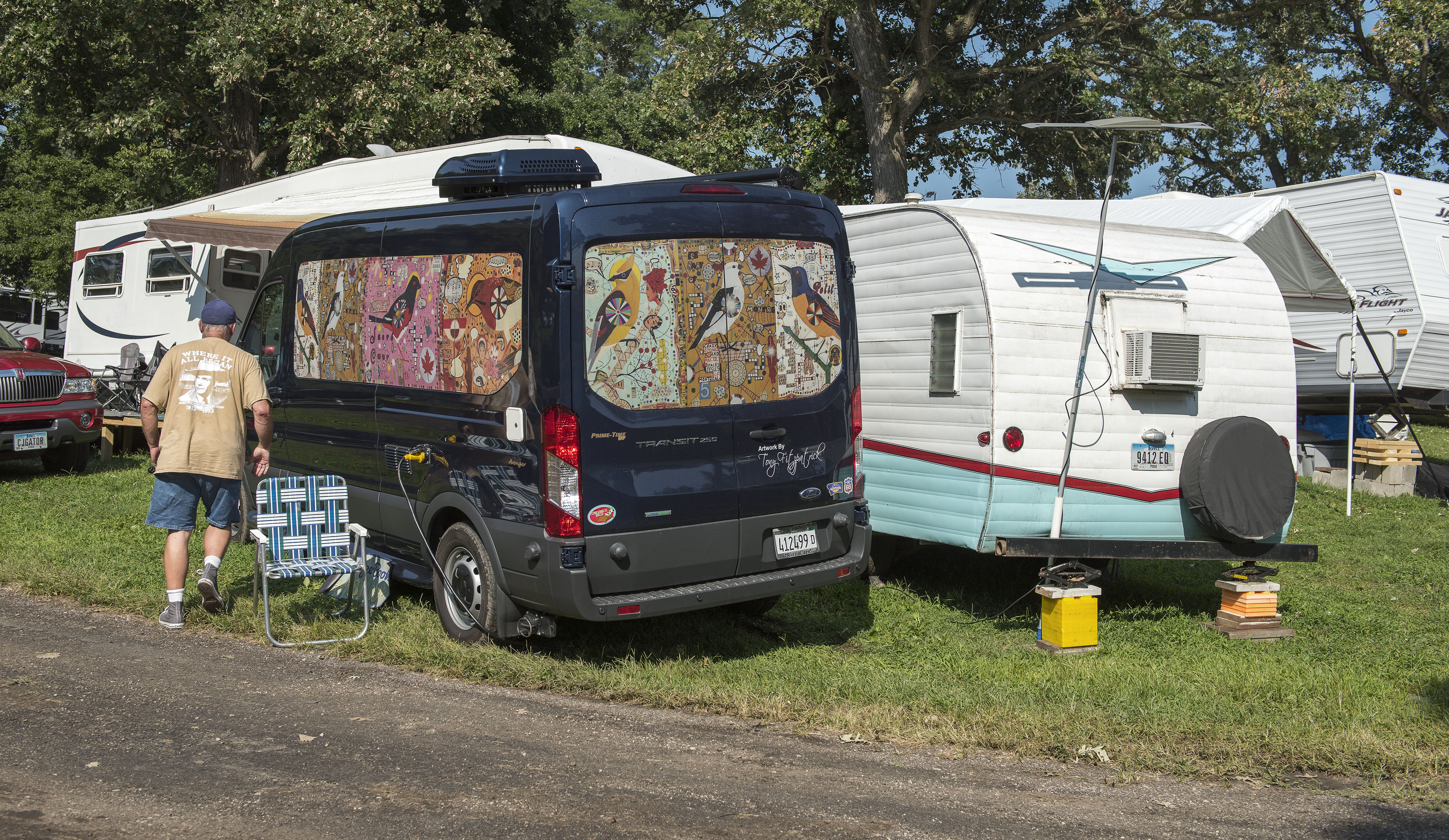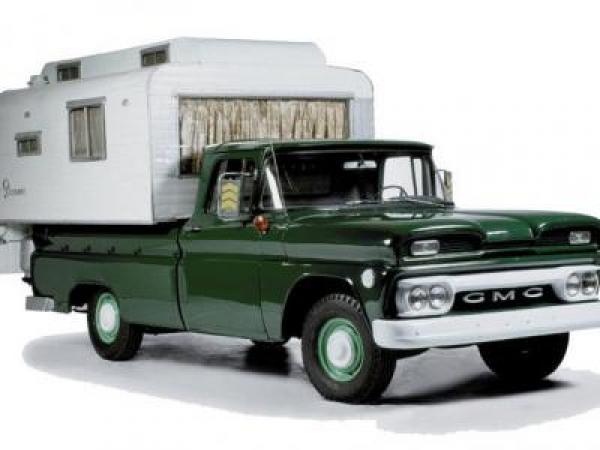
SALINAS, Ca.–Long time Salinas body shop owner Gene Cochetti had never talked publicly about resorting John Steinbeck’s historic Rocinante camper van until we showed up in our camper van.
And we did not have to be towed to Gene Cochetti’s Auto Body Shop in downtown Salinas.
In 1990 Rocinante was delivered to the same body shop. “It was a real piece of junk,” Cochetti said during a mid-June, 2016 conversation in his body shop garage. “It came on a tow truck. We had to do everything. We had to put tires on it. We had to get everything running. And then I had to research the color, the camper shell, the wood of the camper, because it is very, very heavy. It was three-quarter ton with an eight foot box, which is really rare. There must have been ten guys pushing it into our shop.
“Everything was maple inside, which was very hard to match and to refinish. We took the camper off the truck and repainted the truck completely. It had to be a certain green. We had to put the six ply tires on brand new and then take the wheels off. We painted the rims. We researched it so we had to pinstripe the wheels and put all new rubber on to make it look new. We took off all the chrome that was tarnished and rusted and put on all new chrome. It was a big project. That’s not a big problem with me. But we did it for free. I wanted to give something back to the community that has been so wonderful for me. I wanted to give back to the people who helped me be successful for 40 years.
“We’re the oldest independent auto body shop in the Monterey County.”
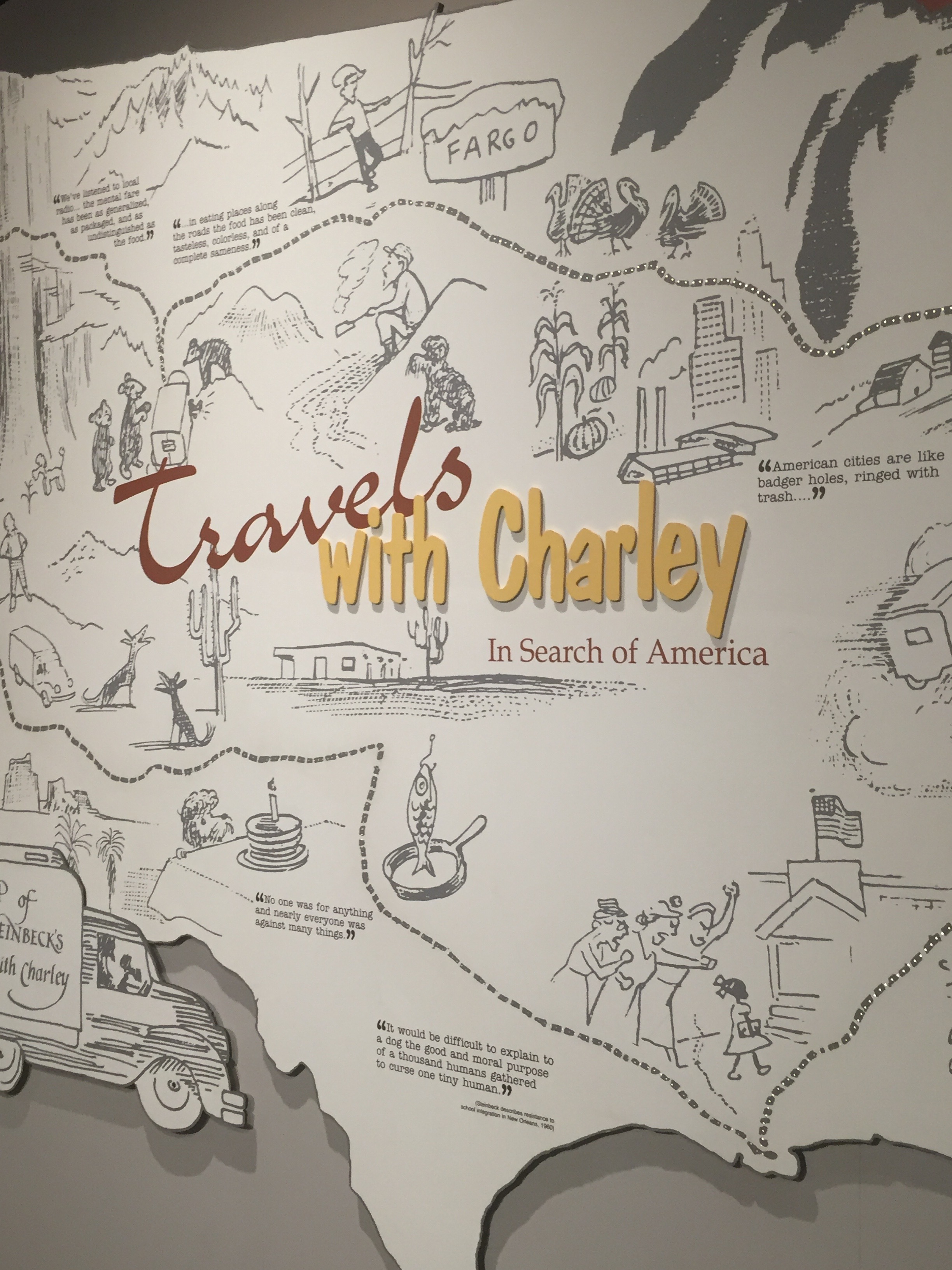
It took Cochetti nearly two months to bring Rocinante completely back to life. Cochetti has always been a collision specialist except early in his career in the 1950s and 60s when he restored custom hot rods and vintage cars. He found more money in car wrecks.
“We had to get it running because we couldn’t push that big monster around,” he continued. “It ran fine. Except we had to tune it up, put in plugs and make it worthy for the road. We didn’t farm anything out. We did it all in here. We got it all ready to go and they came back and told me, “Oh, by the way Cochetti, you have to drain every liquid out of that truck. Gas, all the oil, drain the fluids off. And then we’ll call a tow truck and have it taken to the Steinbeck Center. So we had to to this all over again, not thinking that when you put a vehicle in a locked-in building, you have to make everything dry. Once we did all of that, they were happy and we went down the road.
“It was a fun project.”
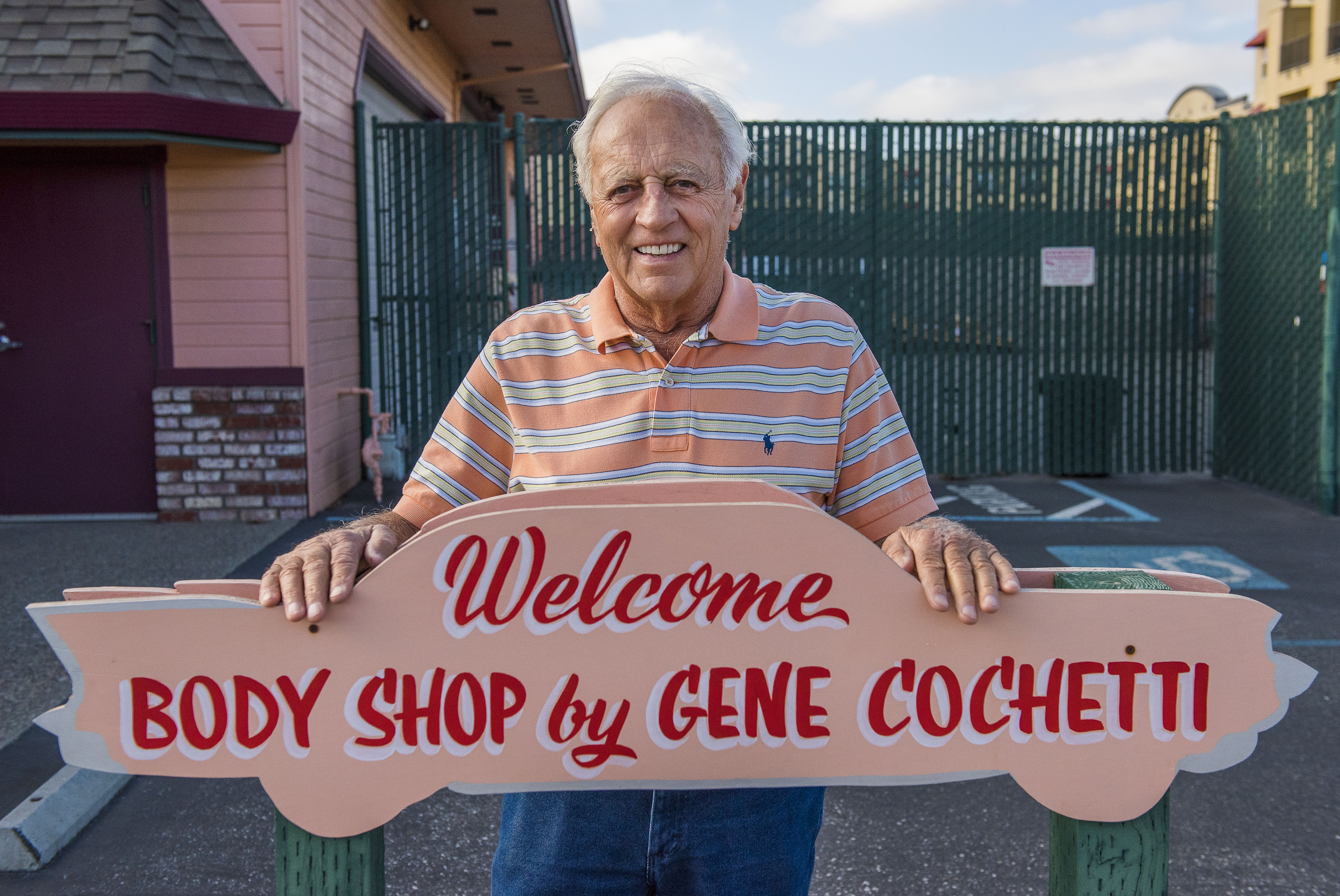
Cochetti was born in Schenectady, N.Y. in 1938 and arrived in Salinas in 1952 with his mother Estelle and father Salvador. Salvador Cochetti was a barber in New York and came to California to become a fisherman. That didn’t work out so he became a house painter. Estelle worked in Salinas area restaurants.
Today, the population of Salinas is about 155,000 people. Cochetti said the population was around 40,000 when his family came to town. “It is basically all ag,” he said. “It used to be mainly lettuce. No hard peaches and no hard watermelons. Then the grapes come. The grapes are big because of the wineries. And now strawberries are the big thing. So the lettuce is sort of just there.”
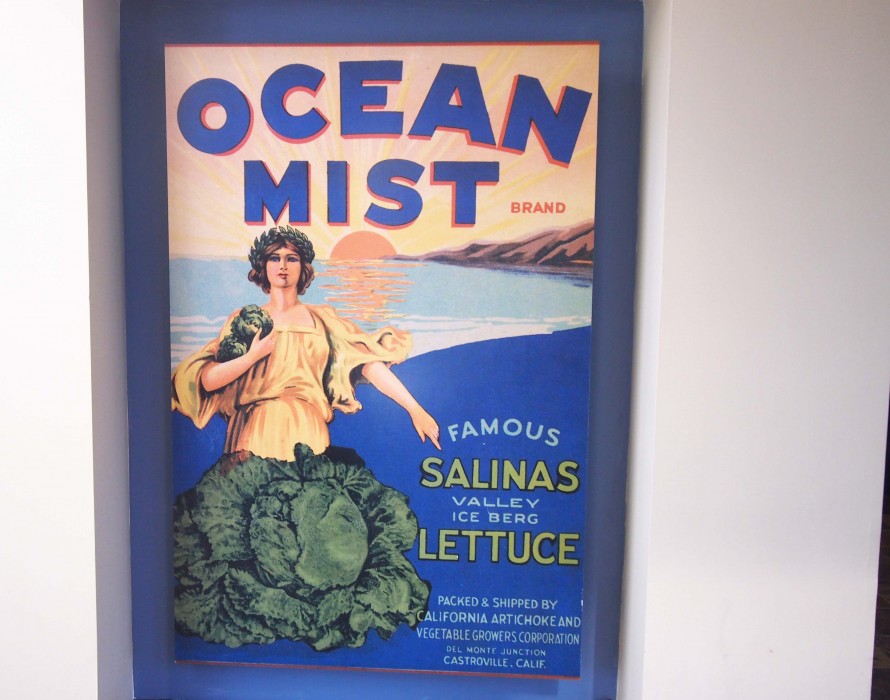
Cochetti’s first car was a 1941 Plymouth, a ride that he stretched out through the Salinas Valley.
“I bought my first hot rod in high school,” he said. “We played with that for a while and I left for the Navy. When I returned I had a good time. And then I got married and that was the end of that. The funny part is that my wife was in junior high with me. And I knew her. But I never took her out. I knew her in high school, never saw her after graduation. And then one day after I came back from the service I was at my dad’s place. I happened to be driving to work and I saw this foxy gal walking down the street with high heels on and nice legs. So I looked and said, ‘I’ll be darned, that’s Rusty!’ And I pulled over and said, ‘Do you want a ride to work?’ And there was only like, a block and a half to work. And she said, ‘Uh, yeah.’ So that’s how we met again. And from there on, we got married and had a couple of kids and a great life.”
Now semi-retired, Cochetti was married for 45 years. Rusty passed away in 2007. “The shop has always been self owned,” he said. “My son (Chris) has taken this thing over. He’s way better than I am. He’s a computer genius and car genius. I taught him when he was in elementary school. He’s going to be 50 pretty soon. And we’ve had a great relationship, an important relationship with your dad and your son.”

Cochetti did not feel a close connection to Steinbeck while working on the camper van. “I didn’t know the man, I never read one of his books,” he said. “Everybody said he was a great writer.
The hard part was researching this thing. They wanted it just like if it came from the dealership to me. It’s probably way better than when he had it. Now, a lot of people see it. And we have a little plaque that says, ‘Work done by Gene Cochetti Auto Body Shop in Salinas.’ We started with about nothing and now it will be there (in the National Steinbeck Center, just a few blocks away) when I’m gone and everybody
else is gone.”
